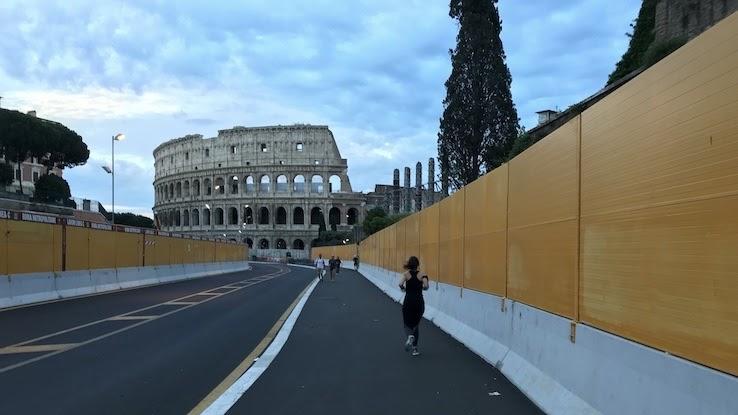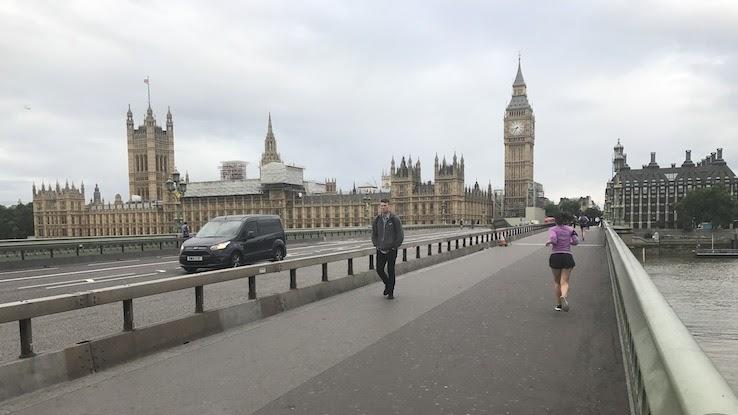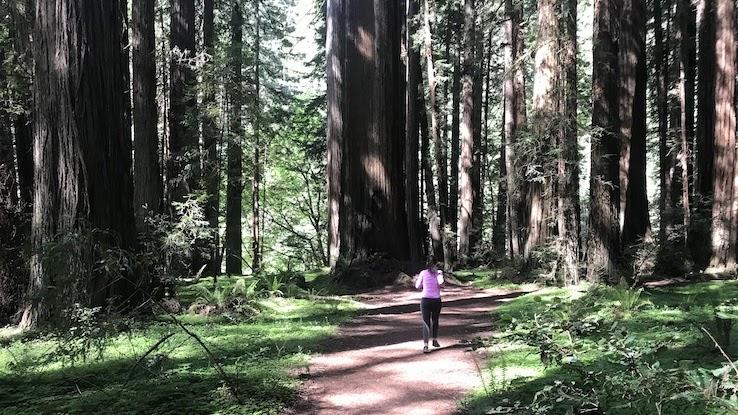
I don’t know if I’d describe myself as a runner. I feel the noun has too many athletic connotations. Plus, I’m a late bloomer. I started running in my early thirties but didn’t get serious until later. I did my first half marathon at 36 and found it incredibly self-fulfilling but also excruciatingly agonizing at times. While training for a half marathon is a very significant time commitment, running the actual 13.1 miles is just as hard. And yet I’ve kept running one half marathon per year ever since that first race, treating it as a yearly checkup and get-back-in-shape event.
Running tends to have a soothing effect on me. On a regular week, I’d take at least a couple or three runs of 3-4 miles each. On a training week, at least one of the runs would need to be longer as I incrementally increased my distance to be able to sustain the 13.1 on race day.
That was until COVID-19 hit and upended my whole running regimen, of course.
The workout-tracking app Strava released its customary “Year in Sport” report at the end of 2020, compiling data from 73 million athletes around the world. It showed some of the challenges of “safely being active during a global pandemic” but also an overall increase in physical activity — alone. Strava grew by about 2 million new athletes each month last year. “3x as many marathons were run alone in 2020 compared to 2019. In the peak month (April 2020), 76% of marathons were run solo, a 10x increase over April 2019,” the report says, pointing out this data to reveal an increase in solitary exercise along with the cancelations of organized marathon races.
How did people do it? There were full weeks in April, May, September and October of last year when I didn’t run a single mile. I didn’t do any physical activity other than walking, really — let alone find the stamina to train or run for a long-distance race. According to my Strava statistics, I ran a total of 451.2 miles in 2018. In 2019 it was 319.8 miles, but I had started a new exercise routine that incorporated more Pilates and yoga, dedicating less time to running as a whole. In 2020 I ran a paltry 262.2 miles. That was not by design.
Runner’s High Is Real
I always feel better after a run. Hitting the pavement has almost a meditative effect on me. Not only is runner’s high real, but the endorphin rush it causes can also be quite compelling, and you get used to it. I feel the need to go for a run after a few sedentary days. If I see someone running and I’m not doing it, I get sort of jealous.

I incorporated running around my working routine and even around my resting routine. I never travel without my running gear. Even though I’m a particularly slow runner while jetlagged, I love running while I’m traveling. I’ll never forget the 10 miles my husband and I ran in London in 2017 because our trip there took place in the middle of training for the San Francisco half marathon a few weeks later. Did I want to just go back to the hotel and have breakfast for the full 10 miles? Very much so. Did I love the experience of running along the Thames South Bank and through several parks in London that way? Absolutely.
But the pandemic changed everything. At first, I simply didn’t feel safe venturing out of the house. Later on, getting into the mental state required to work out was difficult. I didn’t feel like running when the country erupted in a series of protests against racial injustice. I felt it was a time more fitting for reflection and learning. I didn’t feel like running when California started burning in September (the air quality didn’t make it possible for many weeks, either) or when I lost my job in October. Moving to a new place also didn’t make me want to lace my shoes and go for a run. I guess first I’d have had to locate the unlabeled box where I’d put the shoes.
The Boring Reality of Indoor Running
With the prospect of a slightly brighter 2021 and a new job, I decided to get moving again. I’ve also learned a few lessons about running during pandemic times along the way.

I’ve been avoiding some of my favorite running spots because they are too crowded. Running with a mask on the whole time is more than I can handle. The CDC notes that people practicing high-intensity sports may have difficulty breathing while wearing a mask and recommends increasing distance. So choosing less-trafficked streets or paths allows me to pull down the buff if there’s no one in sight.
I’m also all for the “less is more” maxim. So even if I end up running just the bare minimum of 3 miles or less, that’s always better than not running at all. No judgment.
And yes, sadly, I had to resign myself to investing in a treadmill and becoming an indoor runner. I still think it’s boring. But 25 minutes of running in place are better than none at all. Plus, I’ve noticed if I choose a virtual run of a trainer running on a beach, the whole experience tends to be a bit less tedious. It still pales in comparison to the redwood forest runs I used to take in Humboldt County every spring, but it’s better than nothing.
Back in 2019, I did my best time ever in a half marathon. I took it as a good omen because I had just turned 40. I was ready to break more personal records in 2020. But other than the number of episodes of Schitt’s Creek I could watch in one sitting, there were no personal records to achieve in 2020.
For 2021 my main goal is to just stay active and avoid as much as possible those weeks in which I don’t exercise at all. I think as far as pandemic goals go, that’s ambitious enough.
Now, forgive me for leaving. I need to go make my 2021 Strava statistics a bit less sad than the ones from last year.
Resource Links:
https://www.cdc.gov/coronavirus/2019-ncov/daily-life-coping/playing-sports.html





